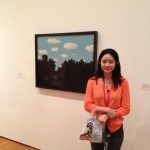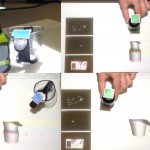hkim@gsd.harvard.edu
Harvard Graduate School of Design, Master in Design Studies / Technology

Expertise
★★★★ Art
☆☆★★ Architecture
☆★★★ Craft/Fabrication
★★★★ Design
☆☆☆★ DIY Electronics
☆☆☆★ Electrical Eng.
☆☆☆★Mech. Eng.
☆☆☆★ Programming/CS
Portfolio
http://issuu.com/heaminkim/docs/hea_min_kim_harvad_gsd_mdes
Experience
I have studies industrial design in B.F.A. I have very talented to express my idea within in drawing or computation design. In this class, I can purse to find new fuse realm of digital fabrication, art and design. I have worked a several design company such as furniture design lab and exhibition company for internship.
Why
In the 21st century, people’s perception is rooted in a variety of media. There is the media we experience, and there is the media we imagine. Through all of these media come the images and writings we receive. In the 21st century, there is no pure imagination resulting without media. This is because media directly informs people’s experience. In this way, media immensely impacts our ways of thinking. Media is not simply the physical or nonphysical tools, equipment or installation. Rather, the power of media rests in its potential to produce new phenomena and generate new terms of expression to describe the world around us. I believe this contributes the expansion of mans.
People today are already mixed with media and they live in smart environments. All of them develop new communication language with digital interfaces in order to get information. With regards to the smart environment, the important problem worth considering is how this sort of technology acts a mechanism to facilitate communication between people as well as how it fuses with our lives in order to do so. I believe we have to consider two points to have successful communication with new environments based on technology. First, we need to understand how digital interfaces curve our logic and perception of environments. How this phenomenon change the people perception about materials. Second, we have to understand human’s fundamental emotion and deep purpose of their behavior. Understanding of people is very important in digital environment because this can lead people to use their full of sense and thinking.
My main research purpose is that the ways in which people’s senses are stimulated by an emotional factor embedded within digital environments. In this point, the most important is the system of using technology rather than technology itself. I believe that we have already developed technology, but the problem is we do not know how to organize or communicate this technology properly.






